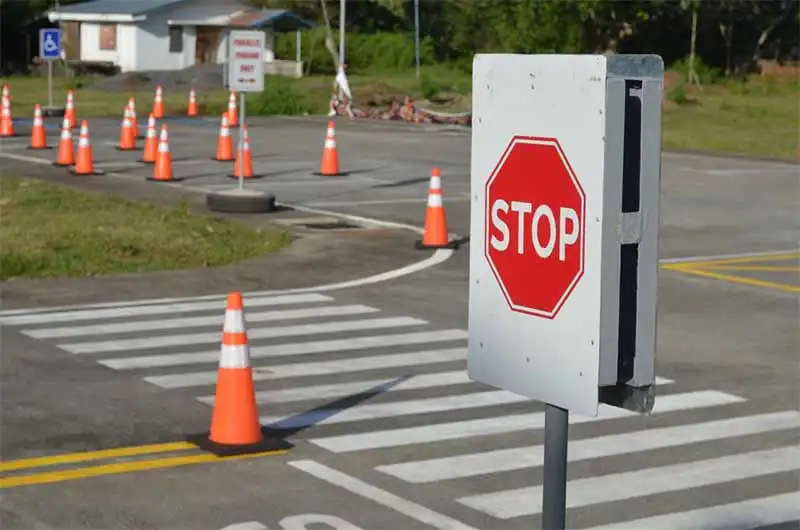Google Ads for Driving Schools: A Complete Guide
When running a driving school, getting the word out about your services is essential for attracting students.
While traditional advertising methods like flyers or local newspaper ads have their place, they can only reach a limited audience.
This is where Google Ads becomes a game-changer. By utilizing Google’s powerful advertising platform, driving schools can connect with people actively searching for lessons in their local area—whether they’re teenagers eager to get their first license or adults looking to brush up on their skills.
Google Ads allows your business to appear at the very top of search results, ensuring your school is seen by potential students at the moment they’re ready to book lessons.
With features like location targeting, keyword-based ads, and detailed analytics, Google Ads makes it easier to reach the right audience without wasting your budget.
In this guide, you’ll learn everything you need to know about successfully using Google Ads for driving schools.
We’ll start by covering how to set up your first ad campaign, including selecting the right keywords to target potential students in your area.
From there, we’ll dive into best practices, such as optimizing your landing pages to convert clicks into sign-ups and crafting compelling ad copies that stand out in a competitive market.
Beyond the basics, you’ll discover actionable tips to maximize your return on investment (ROI), including strategies for improving your ad’s quality score and tracking conversions to ensure you’re getting the most from your budget.
Whether you’re new to digital marketing or looking to refine your current strategy, this guide will help you leverage Google Ads to grow your driving school and attract more students than ever before.
By the end, you’ll have a clear understanding of how to create effective campaigns, avoid common pitfalls, and consistently bring in new learners through targeted, cost-effective advertising.
Google Ads isn’t just an option for driving schools; it’s a powerful tool that, when used correctly, can transform how you connect with your community and grow your business.
Let’s get started!
What Are Google Ads and Why Do Driving Schools Need Them?
Google Ads is an online advertising platform that allows businesses to display their ads on Google’s search results pages, partner websites, and YouTube.
It works on a pay-per-click (PPC) model, meaning you only pay when someone clicks on your ad.
This makes Google Ads an incredibly cost-effective way to promote your services, especially for driving schools looking to connect with students who are actively searching for lessons.
For driving schools, the real power of Google Ads lies in its ability to reach the right audience at the right time.
Imagine someone searching for “driving lessons near me” or “affordable driving schools in [city].”
With Google Ads, your school can appear at the top of their search results, increasing the chances of them clicking on your ad and signing up for lessons.
One of the unique benefits for driving schools is the ability to target local learners.
Since most students prefer to find a school close to their home or workplace, Google Ads allows you to set up location-based targeting.
This ensures your ads are shown only to people within your service area, whether it’s a single neighborhood or an entire city.
Another advantage is the opportunity to promote special offers or packages.
For instance, if you’re running a seasonal discount or a beginner’s course, you can highlight these promotions directly in your ad copy.
This not only grabs attention but also gives potential students a reason to choose your school over others.
Finally, Google Ads helps driving schools stay ahead of their competition.
Many driving schools still rely on word-of-mouth referrals or outdated advertising methods, leaving a gap for savvy schools to dominate the digital space.
By investing in Google Ads, you position your school as a modern, accessible, and professional choice, ensuring you attract tech-savvy students who often rely on online searches to find services.
In short, Google Ads is more than just an advertising tool—it’s a way to build visibility, drive traffic to your website, and grow your business in a measurable and efficient manner.
For driving schools, this platform offers unparalleled opportunities to connect with the local community, attract new students, and thrive in a competitive market.
How to Set Up Google Ads for Driving Schools (Step-by-Step)
Getting started with Google Ads might seem intimidating at first, but with a clear step-by-step approach, you can create effective campaigns that attract new students to your driving school.
Here’s how to set everything up:
Create a Google Ads Account and Set Up Billing
The first step is to create your Google Ads account. Head over to Google Ads and sign up using your Google account.
Once logged in, you’ll need to provide some basic details about your business, such as your location and the currency you want to use.
Next, set up your billing information. This is essential for activating your campaigns, as Google charges you based on the clicks your ads receive.
You can choose from several payment methods, such as credit cards or direct debit, depending on your preference.
Make sure to review Google’s billing policies to understand how and when payments are processed.
Research Relevant Keywords
Keyword research is the foundation of a successful Google Ads campaign. It helps you identify the terms your potential students are using to search for driving schools.
For example, phrases like “driving lessons near me,” “affordable driving schools,” or “learn to drive in [your city]” are likely to bring in high-quality leads.
To find these keywords, use tools like Google’s Keyword Planner. This free tool provides data on search volumes, competition, and keyword suggestions.
You can also analyze your competitors’ ads to see what keywords they’re targeting. The goal is to focus on high-intent keywords that directly relate to your services and location.
Design Your Campaign Structure
Once you have your keywords, it’s time to choose the right campaign type. Google Ads offers several options, including Search, Display, Video, and Local campaigns.
For driving schools, Search Campaigns are the most effective because they show your ads to users actively searching for your services.
You can enhance your targeting by creating a Local Search Campaign, which focuses on promoting your driving school to people within a specific area.
Set up separate ad groups for different keywords or services you offer, such as beginner lessons, advanced driving skills, or test preparation.
This structure helps you monitor and optimize each group individually for better results.
Write Compelling Ad Copies
Your ad copy is what convinces potential students to click on your ad, so it needs to be engaging and persuasive.
Start with a strong headline that includes keywords like “Affordable Driving Lessons” or “Expert Driving Instructors Near You.”
Follow this with a concise and enticing description that highlights your unique selling points.
For example, you could mention:
- Discounts for new students.
- Flexible lesson timings that fit busy schedules.
- Testimonials from successful learners.
Adding a clear call-to-action (CTA) such as “Book Your First Lesson Today!” encourages users to take immediate action.
Set Up Ad Extensions
Ad extensions are an excellent way to make your ads more informative and clickable.
They allow you to display additional information, such as:
- Location extensions: Show your driving school’s address or a map link to help students find you easily.
- Call extensions: Include a clickable phone number so prospects can contact you directly.
- Site link extensions: Add links to specific pages on your website, such as your pricing, services, or FAQs.
Using ad extensions not only improves your ad’s visibility but also provides more reasons for users to choose your school.
By following these steps, you’ll have a well-structured Google Ads campaign that effectively targets potential students, increases clicks, and drives sign-ups for your driving school.
Google Ads Best Practices for Driving Schools
Running Google Ads campaigns effectively isn’t just about setting up ads; it’s about continuous optimization to get the best results.
These best practices will help you make the most out of your campaigns and attract more students to your driving school.
Use Keyword Match Types Effectively
Keyword match types determine how closely a user’s search query needs to match your chosen keywords for your ad to appear.
- Broad Match: This setting shows your ad for any searches related to your keyword. For instance, the keyword “driving school” might trigger searches like “best driving instructors” or “car driving tips.” While it maximizes reach, it may attract less relevant traffic.
- Phrase Match: Ads appear for searches that include your keyword in the exact order you’ve specified. For example, “driving lessons” might show for “affordable driving lessons near me.” This is a great balance between reach and relevance.
- Exact Match: Your ad only appears when the search term matches your keyword precisely, such as “learn driving.” This provides the most targeted traffic but limits reach.
To optimize your campaigns, use a mix of match types. Start with broader match types to gather insights, then refine your targeting based on performance data.
This ensures you’re reaching both a wide audience and high-intent searchers.
Create a Negative Keyword List
Not all traffic is valuable. Irrelevant clicks can waste your budget and reduce your return on investment.
Negative keywords help you exclude searches that don’t align with your goals.
For example, terms like “free driving lessons” or “driving games” are unlikely to convert into paying students.
By adding these as negative keywords, your ads won’t appear for these searches, saving you money.
How to Add Negative Keywords in Google Ads:
- Go to your campaign settings in Google Ads.
- Click on “Negative Keywords.”
- Add your list of unwanted keywords and apply them at the campaign or ad group level.
Regularly review your search term reports to identify other irrelevant queries and expand your negative keyword list.
Test Your Ad Copies Regularly
A/B testing your ad copies is essential for improving performance. Test different headlines, descriptions, and call-to-action (CTA) phrases to see what resonates best with your audience.
For example, you can test headlines like:
- “Affordable Driving Lessons in [City]”
- “Pass Your Driving Test with Ease!”
For CTAs, experiment with phrases such as “Book Now,” “Learn More,” or “Start Driving Today.”
Analyzing the results of these tests will help you refine your message and increase your click-through rates.
Optimize Landing Pages for Conversions
Your landing page is where potential students decide whether to sign up, so it needs to be optimized for maximum impact.
Ensure your page has a clean design, clear navigation, and a prominent CTA.
Include elements such as:
- Student Testimonials: Social proof builds trust and confidence.
- A Simple Signup Form: Ask only for essential information like name, contact details, and preferred lesson timings.
- Mobile Responsiveness: Many users search on their phones, so your page must load quickly and look great on mobile devices.
The goal is to make it as easy as possible for users to take the next step, whether that’s booking a lesson or contacting your school.
Improve Your Ad’s Quality Score
Your Quality Score is a crucial metric in Google Ads that affects both your ad placement and cost-per-click.
It’s influenced by:
- Click-Through Rate (CTR): A high CTR indicates that users find your ad relevant and compelling. Improve CTR by using strong headlines and CTAs.
- Ad Relevance: Your ad copy should closely align with the keywords you’re targeting. For example, if your keyword is “beginner driving lessons,” mention it in your ad.
- Landing Page Experience: Ensure your landing page provides a seamless experience, with fast loading times, clear content, and relevant information.
By regularly reviewing these factors and making improvements, you’ll enhance your Quality Score, reduce costs, and improve your ad performance.
Following these best practices will help your driving school’s Google Ads campaigns stand out, drive more traffic, and ultimately convert more prospective students into bookings.
Tracking and Analyzing Your Google Ads Performance
Tracking and analyzing the performance of your Google Ads campaign is crucial to ensure your driving school gets the best return on investment.
It allows you to understand what’s working, identify areas for improvement, and make data-driven decisions that align with your advertising goals.
Set Up Conversion Tracking
To evaluate the success of your ads, you need to track key actions that potential students take, such as submitting a form, making a phone call, or clicking to book a lesson.
Setting up conversion tracking ensures that you capture these valuable interactions.
Here’s how to get started:
- In Google Ads, navigate to the “Tools & Settings” menu and select “Conversions.”
- Create a new conversion action for the specific goal you want to track, such as website form submissions or call clicks.
- Add the tracking tag provided by Google Ads to your website or integrate it with your call tracking software.
For a more comprehensive view, link your Google Ads account with Google Analytics.
This integration allows you to analyze user behavior on your website after they’ve clicked on your ad.
For instance, you can see how long visitors stay on your site, which pages they visit, and how many of them complete a sign-up form.
Monitor Key Metrics
Once conversion tracking is in place, it’s time to monitor the performance metrics that matter most for your driving school.
- Click-Through Rate (CTR): This metric shows how often users click on your ad after seeing it. A high CTR indicates that your ad copy and targeting are effective.
- Conversion Rate: This is the percentage of ad clicks that result in a desired action, such as signing up for lessons. A low conversion rate might mean you need to optimize your landing page or refine your ad targeting.
- Cost Per Lead (CPL): This tells you how much it costs to acquire a potential student. Keeping this figure low ensures your campaign remains profitable.
Monitoring these metrics regularly provides insight into how well your campaign is performing and highlights areas that need attention.
Make Data-Driven Adjustments
Tracking performance metrics is only valuable if you use the data to improve your campaigns.
Regularly reviewing your reports and making informed adjustments can significantly boost your results.
- Adjust Bids: If certain keywords are driving more conversions, consider increasing your bids for those terms to maximize visibility. Conversely, lower your bids for underperforming keywords to manage costs.
- Refine Keywords: Use your search term report to identify irrelevant queries. Add these as negative keywords to prevent wasted ad spend. You can also explore additional relevant keywords based on performance data.
- Update Ad Creatives: If your ads aren’t generating enough clicks, test new headlines, descriptions, or call-to-action phrases. For example, include specific offers like “10% off beginner lessons” to make your ads more appealing.
- Optimize Landing Pages: Review the performance of your landing pages. If visitors are clicking on your ad but not converting, consider improving the page’s layout, content, or loading speed.
By consistently tracking and analyzing your Google Ads campaigns, you can make strategic adjustments that drive better results, helping your driving school attract more students and grow its presence in the local market.
Additional Tips to Maximize ROI
When running Google Ads for driving schools, maximizing your return on investment (ROI) involves strategic planning and adaptability.
By tailoring your campaigns to meet the unique needs of your target audience, you can ensure your ads deliver the best possible results while minimizing wasted ad spend.
Here are some practical tips to help you get the most out of your campaigns.
Seasonal Promotions to Drive Engagement
Timing plays a crucial role in attracting students. Offering seasonal promotions can create a sense of urgency and encourage potential learners to take action.
For instance:
- During the holiday season, you might promote discounted driving lessons as a thoughtful gift idea.
- At the start of summer or winter breaks, target students looking to make productive use of their time.
- Highlight limited-time offers such as “Book a package of 10 lessons by [specific date] and get one lesson free.”
These seasonal promotions not only draw attention to your driving school but also make your ads more relevant to current needs and trends.
Leverage Geo-Targeting for Local Impact
Driving schools primarily serve local communities, making geo-targeting an essential tool for your campaigns.
By using location targeting in Google Ads, you can focus your budget on potential students within your service area.
For example, you can:
- Target specific neighborhoods, cities, or postal codes where your driving school operates.
- Use location-based ad copy, such as “Affordable driving lessons in [City Name].”
- Exclude areas outside your reach to avoid wasting ad spend on users who can’t enroll in your classes.
Geo-targeting ensures that your ads are shown to people who are most likely to sign up for your lessons, improving your conversion rates and ROI.
Re-Engage Visitors with Remarketing Campaigns
Not every potential student will sign up on their first visit to your website. Remarketing campaigns allow you to reconnect with these users, reminding them of your services and encouraging them to take the next step.
Remarketing works by displaying your ads to users who have previously interacted with your website, such as browsing lesson packages or starting but not completing a sign-up form.
You can make these campaigns even more effective by:
- Offering special incentives, like “Come back and book today for 10% off!”
- Displaying ads that showcase testimonials or success stories from past students to build trust.
- Using dynamic remarketing to show personalized ads based on the user’s previous behavior, such as highlighting the package they viewed.
Remarketing keeps your driving school top-of-mind and increases the chances of converting visitors who may need a little extra nudge.
By incorporating seasonal promotions, local targeting, and remarketing into your Google Ads strategy, you can significantly enhance the effectiveness of your campaigns.
These tips not only help attract new students but also ensure that your ad budget is being used as efficiently as possible.
With consistent optimization and a focus on audience needs, your driving school can achieve impressive results and a strong ROI from Google Ads.
Common Mistakes to Avoid in Google Ads for Driving Schools
Running Google Ads for driving schools can be a highly effective way to attract new students, but it’s not without challenges.
Avoiding common mistakes can save you from wasted ad spend and missed opportunities to connect with your target audience.
Below, we’ll discuss three critical errors and how to address them, ensuring your campaigns achieve the best possible results.
Overlooking Negative Keywords
One of the most frequent pitfalls in Google Ads is neglecting to use negative keywords.
Without them, your ads may appear for irrelevant searches, wasting your budget on clicks that won’t convert into new students.
For instance, if someone searches for “free driving lessons” or “driving games,” your ad might show up unless you’ve added these terms to your negative keyword list.
These clicks are unlikely to result in paid enrollments.
To avoid this, regularly update your negative keyword list.
Review your search terms report to identify phrases that triggered your ads but don’t align with your services.
Adding these as negative keywords will help filter out irrelevant traffic, ensuring your budget is spent on high-intent searches like “affordable driving lessons near me” or “learn to drive in [your location].”
Not Optimizing for Mobile Users
With most people searching for services on their smartphones, ignoring mobile optimization is a costly mistake.
If your ads or landing pages aren’t mobile-friendly, you risk losing a significant portion of potential students.
To ensure a seamless experience for mobile users:
- Use responsive design for your landing pages so they display well on all screen sizes.
- Keep page load times fast—mobile users are less likely to wait for slow-loading pages.
- Enable call extensions in your ads, allowing prospects to directly tap and call your driving school.
- Test your ads on mobile devices to confirm they appear as intended, with clear headlines and call-to-actions visible.
By prioritizing mobile optimization, you can better connect with on-the-go users who are actively searching for driving lessons.
Ignoring Ad Performance Reports
Another common error is running campaigns without monitoring their performance.
Google Ads provides detailed insights into metrics like click-through rates (CTR), conversion rates, and cost per lead.
Ignoring these reports means missing valuable opportunities to refine your campaigns.
For example, if you notice that one ad consistently outperforms others, you can analyze what makes it effective—be it the headline, offer, or call-to-action—and apply those insights to other ads.
Conversely, underperforming ads should be paused or revised to avoid wasting your budget.
To stay on top of your campaigns:
- Schedule regular check-ins to review performance metrics.
- Use automated rules to pause ads or adjust bids when specific conditions are met.
- Test variations of your ads to identify what resonates best with your audience.
By actively monitoring and adjusting your campaigns, you can ensure they remain cost-effective and deliver strong results for your driving school.
Avoiding these common pitfalls—overlooking negative keywords, neglecting mobile users, and ignoring performance data—can drastically improve the effectiveness of your Google Ads campaigns.
By proactively addressing these areas, you’ll not only attract more students but also ensure your ad budget is spent wisely, delivering maximum value for your driving school.
FAQs About Google Ads for Driving Schools
How much should a driving school spend on Google Ads?
The budget depends on your location and competition. A good starting point is $10–$20 per day for smaller areas or $50+ for larger cities.
Monitor results and adjust based on performance metrics like cost per lead and conversion rates.
What keywords should driving schools target in Google Ads?
Focus on keywords like “driving lessons near me,” “affordable driving schools,” “learn to drive in [city],” and “driving classes for beginners.”
Use tools like Google Keyword Planner to identify high-traffic, low-competition terms.
How can I make my driving school ads stand out?
Write clear and compelling ad copies that highlight your unique selling points.
Mention promotions (e.g., first lesson discounts), flexible scheduling, or experienced instructors.
Pair this with a strong call-to-action like “Book Your First Lesson Today!”
How do I track leads from my Google Ads campaigns?
Set up conversion tracking in Google Ads to measure actions like form submissions, calls, or bookings.
Integrate with Google Analytics for deeper insights into user behavior and campaign performance.
Can Google Ads help me attract local students?
Yes! Use geo-targeting to show ads only in your service area. Add location extensions to highlight your address and make it easy for nearby prospects to find and contact your driving school.







